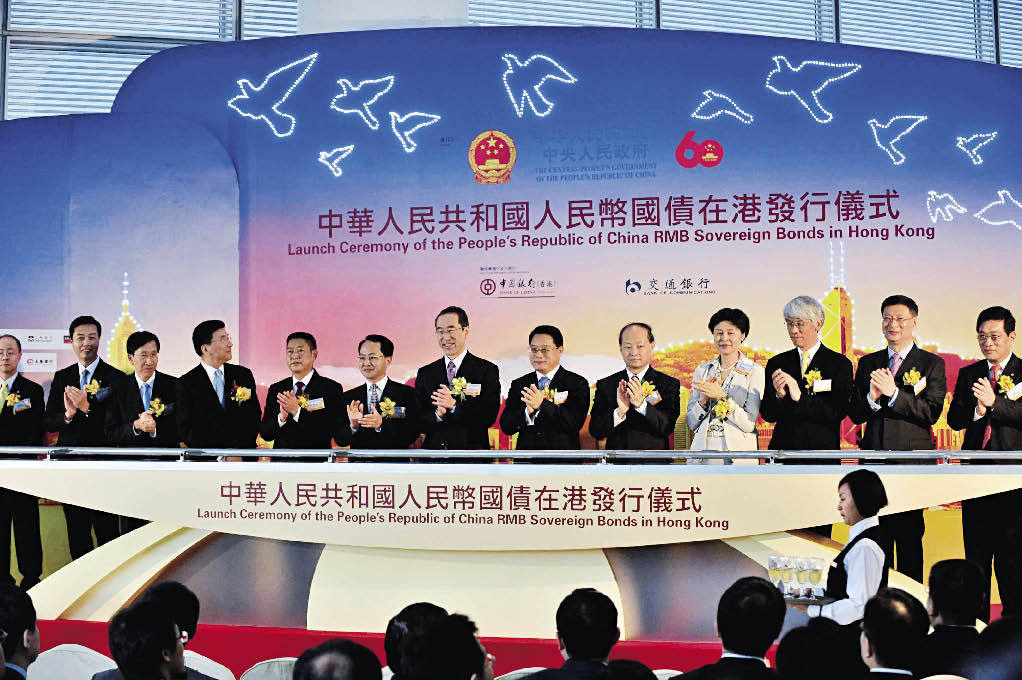| A Road Map For the Future Of the Yuan
By XIANG SONGZUO
 |
| On September 28, 2009 the Chinese Finance Ministry issued for the first time 6 billion RMB bonds in Hong Kong.(Source:Cnsphoto) |
There has been a lot of talk of late about the internationalization of the Renminbi into a globally traded hard currency, but no one has yet designed a clear-cut road map on how to achieve that task. China needs to incorporate this goal with a much wider and more comprehensive financial strategy that corresponds to the full potential of its economic and monetary ambitions.
One important component of this approach would be to enhance the use of the Renminbi in international bond issues, including those done by foreign governments. This would serve stability while recycling China’s current account surplus abroad in a manner that, in contrast to the amassing of dollar reserves by the People’s Bank of China, does not build up unnecessary foreign exchange risks for Chinese creditors. The issuing activity would be concentrated in Shanghai. There would be important and beneficial side effects to it, such as increased profitability of Chinese banks and Shanghai’s status as an international financial center.
Deja vu? There are some interesting parallels here with the expansion of borrowing in D-Marks through bond issues by foreign governments and corporations in Germany during the 1970s. Particularly after the 1973 oil crisis, issuance increased markedly as the West German authorities liberalized the market to allow the Federal Republic’s current account surplus to be siphoned off abroad, culminating in the landmark issuance of “Carter bonds” in D-Marks by the US Treasury under the administration of President Jimmy Carter in 1979. (This was also an excellent source of earnings for German banks, one that has greatly subsided since economic and monetary union in 1999, since they now share their previous D-Mark issuing monopoly with other banks throughout the Euro-using nations.)
Partly with this parallel in mind, I recommend that the US issue Renminbi-denominated bonds in Shanghai and then convert the proceeds into dollars. Such high-grade Renminbi bonds would be attractive assets both for private Chinese investors and for official bond-holders (including those outside China). Encouraging the US to borrow in Renminbi rather than in dollars would lower the potential currency risks inherent in China’s large foreign exchange reserves. The corollary is, of course, that the US would be exposed to a new source of vulnerability, as the Treasury would build up liabilities in Renminbi instead of in dollars. But, surely, over time in any international capital markets system, the debtors and not the creditors have to bear the brunt of foreign exchange risks – especially if the asset-liability gap continues to grow.
| 